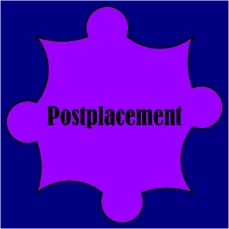How Could You? Hall of Shame-Lauryn Martin-Everett case-Child Death

This will be an archive of heinous actions by those involved in child welfare, foster care and adoption. We forewarn you that these are deeply disturbing stories that may involve sex abuse, murder, kidnapping and other horrendous actions
From Plantation Key, Florida, foster child Lauryn Martin-Everett,16,” tied a wide, blue-patterned scarf around her neck and hanged herself from a bathroom doorway.”![]()
“When Lauryn Martin-Everett hanged herself at a troubled Tavernier youth shelter, children’s advocates in the small island community began asking questions. The answers, they were told, were hundreds of miles away.
Though the 16-year-old had been sent to live at the Florida Keys Children’s Shelter on Plantation Key, the responsibility for her care remained in Southwest Florida.
Members of a South Florida child welfare oversight board expressed frustration Thursday morning that the teen had been moved far from home, and no one in her new county was responsible for ensuring her welfare. “We’re a small community down there; we’re not talking about Miami-Dade,” said Alexsa Leto, who heads the Monroe County office of the state’s Guardian-ad-Litem Program, which matches vulnerable children with court-appointed advocates. “And we didn’t know the child was there.”
Leto, who is a member of Community Based Care Alliance, which oversees foster care and adoption programs in Miami-Dade and Monroe, said there was a “breakdown” between regions of the state that send foster kids to other regions, and sometimes neglect to inform their counterparts that the children require supervision. “That’s sort of alarming,” Leto said. “It makes me worry about what the checks and balances are.”
Jackie Gonzalez, the president of Miami’s privately run foster care agency, Our Kids, said her group was unable to help the teen, as caseworkers were not made aware of her presence in South Florida until weeks after she arrived. When a caseworker went to visit Lauryn, she was gone, having just run away.
“This child was brought to Monroe County by another provider and placed in that youth shelter,” Gonzalez said. “Our Kids and Wesley House did not know about this until weeks later.” Wesley House works with children in state care under contract with Our Kids, which oversees child welfare under contract with DCF.”
“A DCF report said Lauryn died on Dec. 20.[2016] The Miami-Dade Medical Examiner’s office, which performed an autopsy, reported the date of her death as Dec. 23, after her lungs, liver and kidneys were harvested for transplantation.
Thirty eight days later, 14-year-old Naika Venant tied a scarf around her neck, too, and hanged herself in the bathroom of her Miami Gardens foster home. She live-streamed the suicide on Facebook, as friends watched in horror or disbelief. While their manner of death was the same, little else was after they died.
After Naika’s death garnered national attention, the Department of Children & Families produced a 20-page “critical incident rapid response” report, and released it widely. The report on Lauryn was less than three full pages, and left more questions than answers.
At Thursday morning’s meeting, a Florida International University social work professor, board member Jennifer Abeloff, said she was “surprised” the oversight group had never openly discussed the teen’s suicide.
Board members also wondered why DCF had not asked the kinds of probing questions about Lauryn that they had about Naika. “That bothers me,” Leto said.
Charles Scherer, DCF’s director of Family and Community Services in Miami, told the oversight group that Naika was the subject of a “Critical Incident Rapid Response Team,” or CIRRT, report because the agency had recently verified an abuse or neglect allegation involving her. Lauryn had not. Under state law, DCF was not required to perform the same kind of investigation.
Nevertheless, Scherer said, “we are looking into it. We have an open investigation.”
Statewide, DCF has an array of procedures in place to help track children who are moved from region to region, and to ensure their needs are met, Scherer said. In Lauryn’s case, he added, “what we have to look at is accountability.”
Teen who hanged herself at Keys shelter got lost in the foster care system[Fl Keys News 4/6/17 by ]
“A “child fatality summary” by the Department of Children & Families on Lauryn’s short life and unexpected death is less than three pages long. Only four paragraphs are devoted to her eight-year odyssey through the state’s child welfare system. A website DCF developed three years ago to bring transparency to the grim business of child death makes no reference to Lauryn Martin-Everett.
Jessica Sims, a DCF spokeswoman, said the agency would not discuss Lauryn’s death, or her many-year history with the department — and will not release her foster care file. Because DCF has determined that Lauryn did not die as a result of abuse or neglect, details of her case cannot be disclosed to the public, the agency said.
When the Herald asked Sims whether the two-and-a-half page summary was the extent of the state’s inquiry into Lauryn’s death, she said an additional “quality assurance” review is expected later.
DCF’s tight lid on Lauryn’s case isn’t sitting well with at least one member of the Community Based Care Alliance, a watchdog group that meets monthly to ensure that Our Kids, the privately run Miami-Dade and Monroe foster care agency, is held to a high standard.
Alliance member and Miami-Dade Circuit Judge Jeri Cohen, who has presided over child welfare cases on and off since 1996, reviewed the death summary. “There is nothing in it to learn from,” she said.
Thomas Morton, a child welfare administrator who led the Child Welfare Institute for 22 years, said that “it reads like a Triple A travel TripTik,” mostly underscoring the many stops on her foster care journey.”
“It is unclear why Lauryn first became a ward of the state. The summary of her life and death provides no details except that the rights of her birth parents were terminated on Oct. 11, 2006, when Lauryn was 10. She was adopted from the foster care system by another family, but returned to the state Nov. 12, 2014, when her adoptive parents announced they “no longer wished to care for” her.
Lauryn’s return to state care might have had something to do with an allegation of sex abuse; the report is heavily redacted. At the time Lauryn’s adoptive parents abandoned her, Rodriguez said, Lauryn was hoping to move in with her. The two sisters were extremely close, and Rodriguez said she would have passed a home study but for her lack of a driver’s license. Rodriguez already was helping her kid sister financially.
“I fought for Lauryn,” said Rodriguez, who lives in Orlando. “I paid for her cheerleading, her track uniform, her hairdos, her school clothes.”
From November 2014 until her death, Lauryn appears to have burned through at least nine foster care “placements,” with some lasting no more than a week, the summary says.
On Nov. 17, 2016, child welfare administrators dispatched Lauryn from her group home in Lehigh Acres to the Florida Keys Children’s Shelter, which operates an emergency residence in Tavernier, largely for adolescents who have been removed from their parents and have nowhere else to go.
“She told me she hated it, and the place was like a jail,” her sister said. “I said, ‘can I come and see you?’ She said ‘they’re weird here, and they will not let you see me. They’re very strict.’”
DCF’s fatality summary notes that Lauryn had been evaluated by shelter staff, who concluded she “had no known mental health issues, and was not taking any prescribed medication.” Lauryn denied any drug use, and “there was no report or any history, or thoughts of, suicide.”
Morton, who was a staff member to the 2016 U.S. Commission to Eliminate Child Abuse and Neglect Fatalities, said that any adolescent with Lauryn’s history would almost certainly be feeling the effects of significant trauma.”
“If stability is what Lauryn needed, she was unlikely to find it at the Florida Keys Children’s Shelter, more than 200 miles from her Fort Myers-area home. Administrators told Lauryn her stay there “will last as long as she makes it,” the report said, without elaborating. A Nov. 17 notation in her file said Lauryn was “unhappy” about being sent to the shelter. A Dec. 13 note said Lauryn was missing — having run away — when a caseworker went to the shelter to see her.”
“Lauryn had been expelled from school in Charlotte County, the summary said, and she had been told that Monroe County “schools would not allow [her] into their facilities due to her behavior.” DCF declined to say whether the teen was allowed to attend any educational program in the Keys, and, if not, how she spent her time there. The day she hanged herself, a police report said, Lauryn, another girl and a staff member had been washing clothes.When she arrived, her caregivers insisted she sign a safety agreement: She would not harm herself or anyone else.
It was a promise she couldn’t keep.
On Dec. 15, Lauryn tied a wide, blue, scarf-turned-noose around her neck and hanged herself from a bathroom doorway. DCF reported her date of death as Dec. 20. The Miami-Dade Medical Examiner’s office, which performed an autopsy, said she died on Dec. 23, after her lungs, liver and kidneys were harvested for transplantation.
The Monroe Sheriff’s Office report on Lauryn is heavily redacted. It mentions a suicide note, but the note’s details were removed. Lauryn’s sister said she was told there was no suicide note.
The Monroe Sheriff’s Office had been to the shelter many times before: Between January 2012 and April 2016, the department recorded 916 call-outs to the facility, on High Point Road, records obtained by the Herald show. Many of the visits by deputies involved reports of “missing” juveniles, or runaways.”
One foster child hanging stirs anguish; the other is barely noticed[Miami Herald 4/1/17 by Carol Marbin Miller]
REFORM Puzzle Piece


Recent Comments